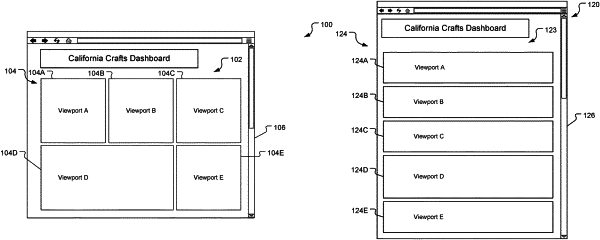| CPC G06F 9/4451 (2013.01) [G06F 8/38 (2013.01); H04L 67/306 (2013.01)] | 20 Claims |

|
1. A method for generating a user interface comprising:
receiving, by a computer system comprising a processing circuit and memory, a user request to access a software platform, the user request being associated with a user identifier;
generating, by the computer system, a user context based on the user request, the user context comprising a user profile associated with the user identifier;
loading, by the computer system, a data structure representing a user interface layout, the data structure comprising a plurality of viewport nodes, a first viewport node of the viewport nodes being associated with a plurality of child nodes representing options for software modules or content items to be shown in a first viewport;
selecting, by the computer system automatically without manual intervention, a first child node from the plurality of child nodes of the first viewport node based on the user context to generate an evaluated data structure comprising a plurality of evaluated viewport nodes comprising an evaluated first viewport node associated with the first child node; and
generating, by the computer system, a customized user interface based on the evaluated data structure, the customized user interface comprising the first viewport, the first viewport displaying a software module or a content item associated with the first child node.
|